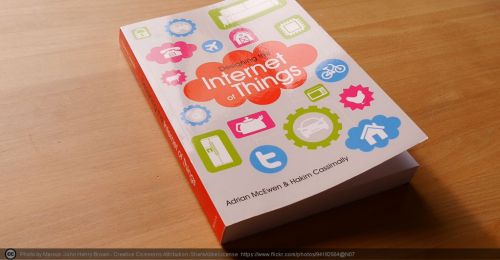The world of customer service is ever changing. The capability to deliver omni-channel, personalised customer engagement is now common. It has transformed how organisations from SMEs to global brands deliver their service strategies.
Welcome to the next stage.
A New Service Ecosystem
Until now the Internet of Things (IoT) and Customer Service operations have not been directly linked. Things have changed. Pioneering organisations of any size can provide live support in response to feedback from any smart product.
This is enabled when you combine case management with the omni-channel routing. Any alert from a smart product can be recognised by this service ecosystem. These are then routed to any suitably skilled service advisor who makes contact with the customer to let them know what is happening. All this happens within the simplicity of a single browser screen.
From the customer’s perspective, this level of proactive service is ideal. In fact the service organisation has probably reached out even before they were aware of any symptoms that indicated a problem. This capability exactly matches current consumer expectations for reduced effort and personalised engagement.
Imagine The Use Cases
A smart product is one that has sensors, software and communications embedded into it. This means it can monitor and provide alerts when any critical condition occurs. In response Network Operating Centres (NOCs) are well established solutions for remotely managing them. Such as railways, power stations and data centres.
Think of these as first generation examples. Restricted to a small niche of products and serviced via a proprietary type of solution. The good news is that today we can roll out this approach on a grand scale. The breakthrough is affordability. Both in the range of products that can be made smart and a cloud based service infrastructure that is affordable for SMEs and global enterprises alike.
Let’s think about the implications.
For a start it reinvents the cost and capability of the NOC. Traditionally, machine to machine (M2M) support required special hardware and software with complex computer-telephony (CTI) integration. As such this operated as a siloed function. Only a handful of people had visibility with the implication that first line support could not react in real time.
Cloud deployed functionality means browser access for anyone who needs to be involved including in-field service teams. This allows for more sophisticated and effective service strategies to emerge. Cloud infrastructures encourage open standards integration and rapid introduction of new functionality. This means new service propositions can be quickly prototyped and scaled for competitive advantage.
Cloud infrastructures are also massively more cost effective than deploying one-off NOC style solutions. The implications are that many more organisations are now able to integrate smart product management into existing customer service operations. This is timely as the world of smart products continues to rapidly evolve.
Within consumer markets we can already see this in the current buzz being generated around consumer wearables. Yet once the excitement of ownership wears off, what unique services could early adopters enjoy from enterprising brands?
For instance, who is going to be the first insurance company to offer personalised policies based on real time health monitoring? When will ‘at risk’ patients be able to rely on live support from experts in their particular medical condition?
What about the emerging world of ‘smart’ consumer products?
We rely on them to keep working. We also expect proactive service. So when can we expect car manufacturers to anticipate customer needs by letting them know when something needs fixing? Before the symptoms are even noticed.
Of course the same applies for washing machines and TVs. In fact our entire homes are gradually going smart as we enable our heating, lighting and security. Could live service become part of a special warranty package? Maybe free for premium priced goods but paid for on lower margin items. Customers would then have peace of mind knowing that critical situations were being brought to their attention and then sorted out for them in a concierge style.
Manufacturing and business markets also benefit.
In fact the cost of downtime in these situations is massively increased. So the need to improve responsiveness becomes even more important. There is a vast array of machines in manufacturing, retail, office and specialist environments such as hospitals and laboratories that are prone to failure. If mission critical they might have 24×7 on site support. Most will make do with in field support teams. Some have no plan B.
In all cases the cost of downtime is increased because it is only at the point of failure that anything happens. Lost time is expensive. Many suppliers face financial penalties as a result. The problem is that the service strategy in these situations is behind the curve. It is reactive. By definition, it is slow.
The combination of smart products and cloud service infrastructure transforms the cost and effectiveness of keeping things working.
This is a new field. Another input to revolutionise how we deliver service. I was first turned on to this by NewVoiceMedia and Salesforce.com. Kudos to them for being fast off the mark. It’s now possible for any forward thinking brand to make this happen.






Hi Martin,
Interesting post.
However, it leaves me wondering a couple of things:
I wonder if the Internet of Things will just be a distraction for many firms, another ‘shiny’ object that will beguile them with what could possibly happen and lead them away from what is probably going to happen or is already happening.
I also wonder how many firms will actually have ‘smart’ products, how many customers will this apply to and, therefore, how much impact this will have?
Call me a heretic if you like 🙂
Adrian